Membrane Structure, Transport and Cell - Cell Communication
1/47
There's no tags or description
Looks like no tags are added yet.
Name | Mastery | Learn | Test | Matching | Spaced |
|---|
No study sessions yet.
48 Terms
The plasma membrane
separates the living cell from its surroundings
Phospholipids
are the most abundant lipids in most membranes
amphipathic molecules, containing hydrophobic and hydrophilic regions
can exist as a stable boundary between two aqueous compartments
At cool temperature membrane
switch from a fluid state to a solid state, depending on the type of lipids
A membrane remains
fluid to a lower temperature
if
it is rich in phospholipids with unsaturated hydrocarbon tails
Membranes must be
fluid to work properly
At warm temperatures (such as 37oC), cholesterol
restrains movement of phospholipids
At cool temperatures, cholesterol
maintains fluidity by preventing tight packing
fluid mosaic model
states that the membrane is a mosaic of protein molecules bobbing in a fluid bilayer of phospholipids
Passive transport
does not require an input of energy
Active transport
requires energy to move substances across the membrane
Transport proteins
are transmembrane proteins that transport molecules
Integral proteins
(e.g. transmembrane proteins) penetrate the hydrophobic interior of the lipid bilayer
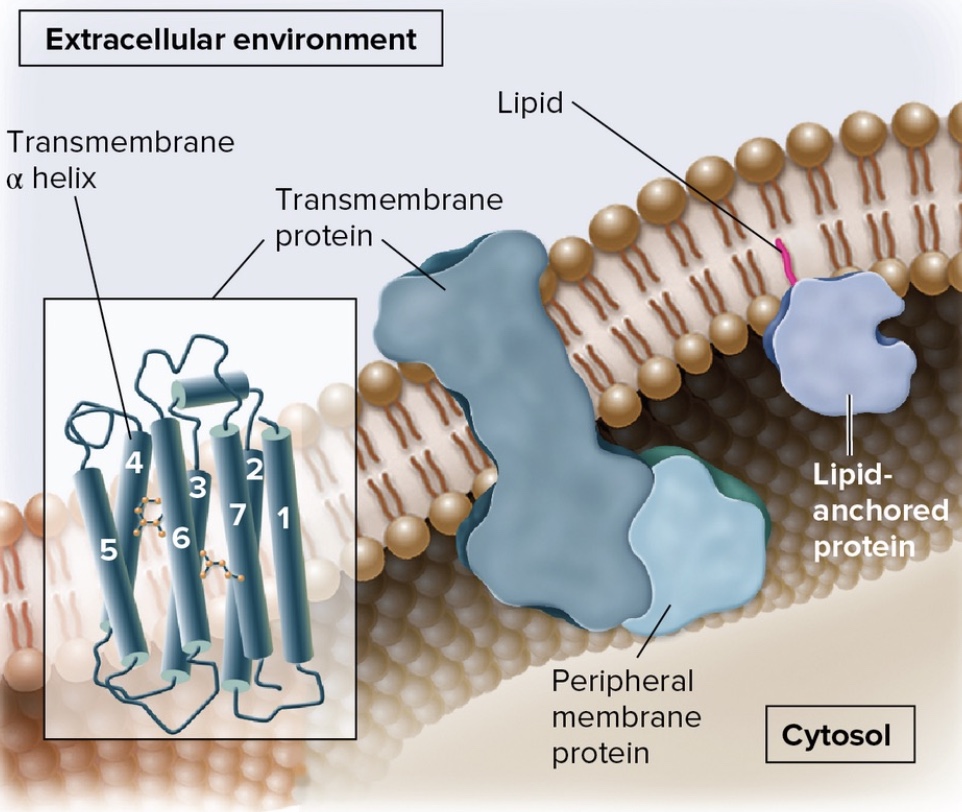
Peripheral proteins
are loosely bound to the surface of the membrane
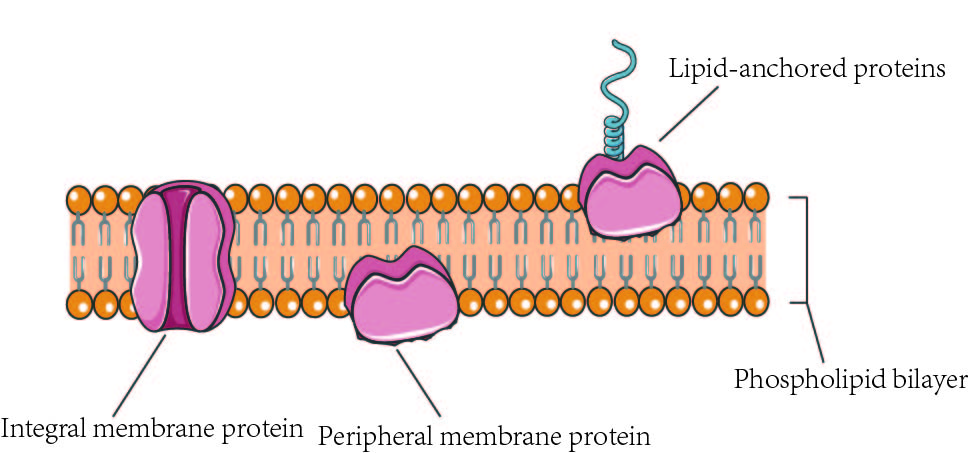
Enzymatic activity
active site exposed to substrates;may be organized as a team by sequential metabolic steps
Attachment to the cytoskeleton and extracellularmatrix (ECM)
maintain cell shape and protein location; may influence intra- and extracellular changes
Cell-cell recognition
glycoproteins serve as ID tags recognized by
proteins on the surface of other cells; usually short-lived binding
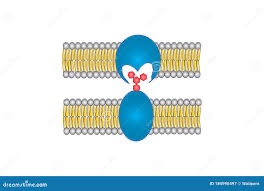
Intercellular joining
membrane proteins of nearby cells may hook together as a junction (e.g. gap or tight junctions); long-lasting binding
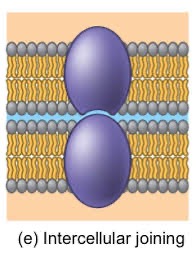
Signal transduction
1.) reception -(sense a signal),
2.) transductions pass the message along, and response (act on the message): two types: G -protein coupled receptors (receptors uses a middle man - a G protein - to send a message to another signaling molecule, which activates the response)
3.) Signaling molecule “ligand” binds and open an ion channel, allowing ions to move in and stimulate a response.

Transport proteins
allow passage of hydrophilic substances across the membrane
channel proteins
Aquaporins
facilitate the passage of water
Carrier Proteins
bind to molecules and change shape to shuttle them across the membrane
Passive transport
Involves diffusion and facilitated diffusion
Moves materials down their concentration gradient
Does not require an input of energy
Types of Passive Transport
Diffusion
Facilitated diffusion
Active transport
Moves materials against their concentration gradient
Requires energy provided by ATP or an electrochemical gradient
Diffusion
is the tendency for molecules to spread out evenly into the available space
Facilitated Diffusion
transport proteins speed the passive movement of molecules across the plasma membrane
Channel proteins
provide corridors that allow a specific molecule or ion to cross the membrane
include:
Aquaporins: for facilitated diffusion of water
Ion channels that open
or close in response to a stimulus (gated channels)
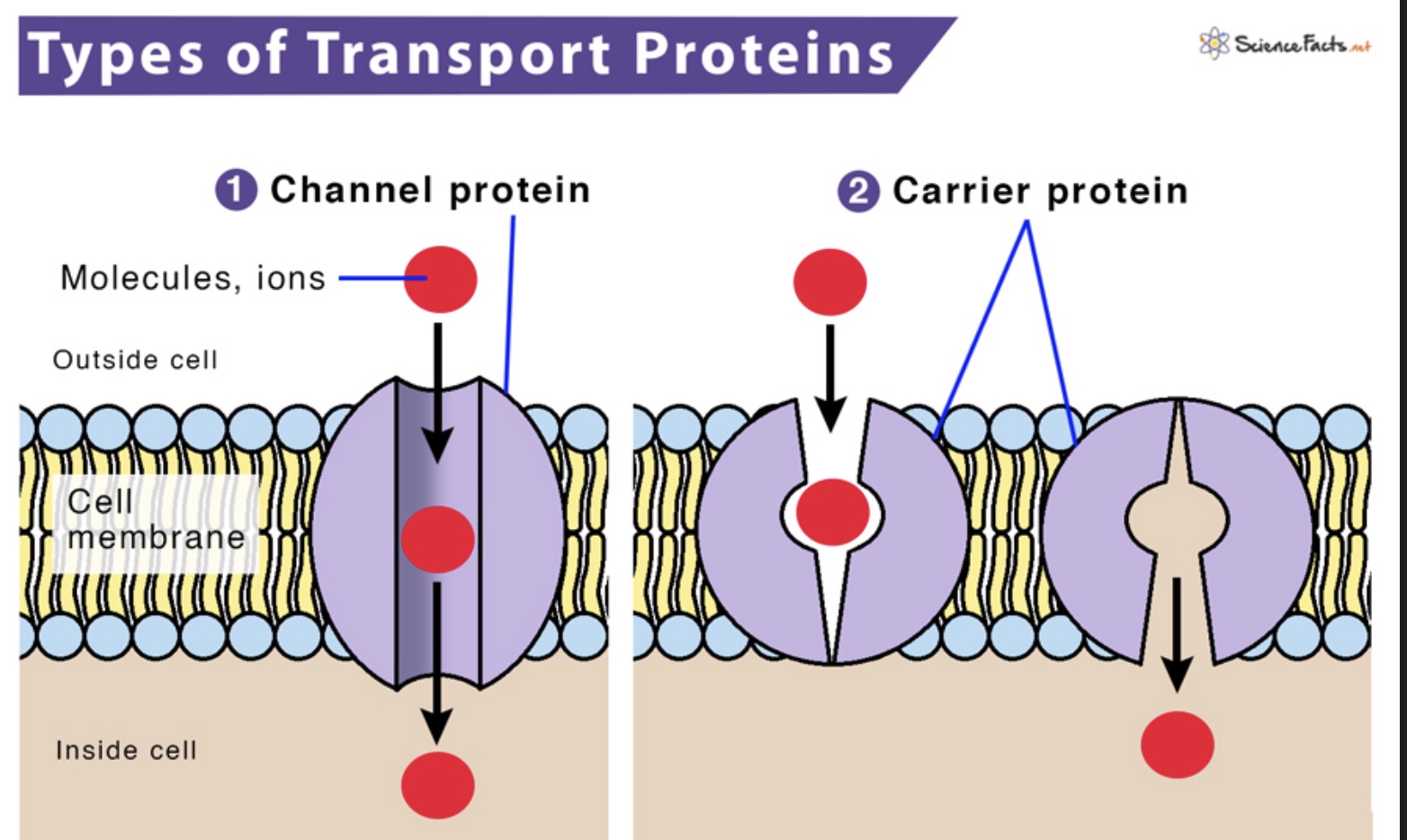
Two types of transport proteins
channel proteins and carrier proteins
Carrier proteins
undergo a subtle change in shape that translocates the solute-binding site across the membrane
sodium-potassium pump
is one type of active transport system: exchanges Na+ for K+
Membrane potential
is the voltage across a membrane
electrochemical gradient
drive the diffusion of ions across a membrane:
electrogenic pump
is a transport protein that generates voltage across a membrane
help store energy that can be used for cellular work
Cotransport
occurs when active transport of a solute indirectly drives transport of other solutes against their own concentration or electrochemical gradient
Secondary Active Transport is
another name for
exocytosis
transport vesicles migrate to the membrane, fuse with it, and release their contents
Large molecules, such as polysaccharides and proteins, cross the
membrane in bulk by means of vesicles
Many secretory cells use
exocytosis
Protein Kinases ______ phosphate groups
add ; a process called phosphorylation; are reusable; turns on protein
Protein Phosphatases ____ phosphate groups
remove; turns off signal transduction pathway
Tight Junctions
Seal cells together to prevent leakage of molecules.
Gap junctions
Allow direct communication between cells by permitting the passage of ions and small molecules
integrins
transmembrane receptors that link the ECM to the cytoskeleton.
Desmosomes
are made of proteins that link the cytoskeletons of adjacent cells
are common in epithelial and muscle tissue
§ These proteins bind to each otherothe proteins that anchor cytoskeletal intermediate filaments
Plasmodesmata
They act as a channel in which molecules can be transported in and out of the plant cells.
Symporter
moves the solutes in the same direction
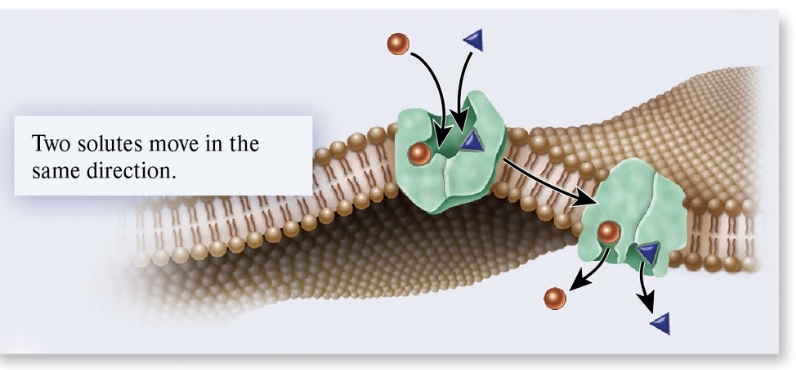
Antiporter
moves the solutes in opposite directions
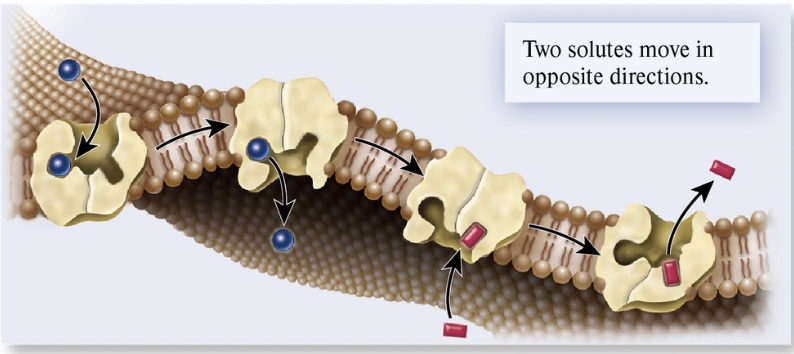
Signal Transduction
reception (sense a signal), - signaling molecule causes a conformational change in the receptor of the target cell
transduction (pass the message along) and response (act on the message);
two types: G protein-coupled receptors (receptors uses a middle man – a G protein – to send a message to another signaling molecule,
which activates the response) and ligand-gated ion channels